The Secret Lives of Santa Claus Around the World
14:58 | 07/12/2024 Print
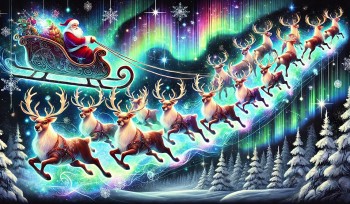 Santa Claus and His Magical Reindeer: The Untold Tales Santa Claus and His Magical Reindeer: The Untold Tales |
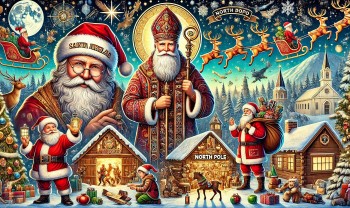 The Real Santa Claus: Myths vs. Facts The Real Santa Claus: Myths vs. Facts |
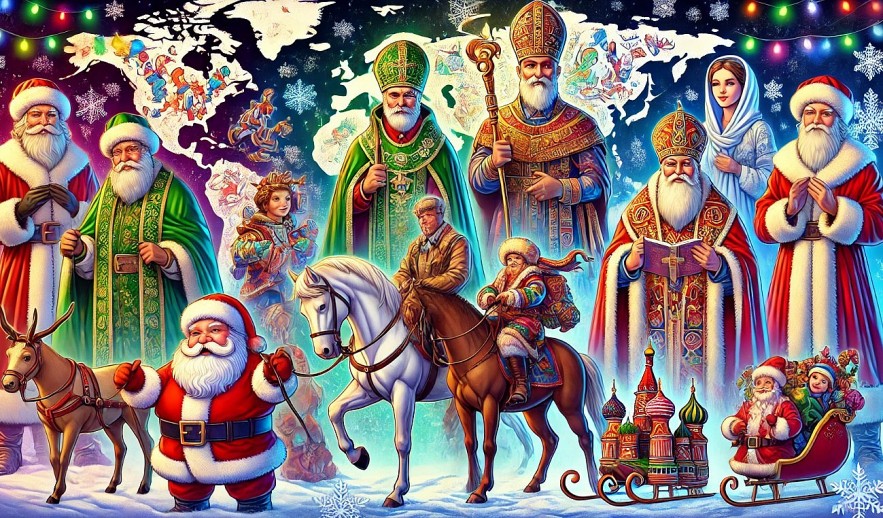 |
| The various cultural versions of Santa Claus |
1. Father Christmas – England’s Jolly Gift-Giver
In England, Santa Claus is known as Father Christmas, a character who predates the modern-day Santa Claus but shares many similarities. Originating from pagan and Christian winter traditions, Father Christmas embodies the spirit of feasting, merriment, and goodwill.
Key Characteristics:
- Appearance: Father Christmas is typically depicted as a tall, kind, and bearded figure dressed in a long, green robe, symbolizing nature and rebirth during the winter solstice. In modern times, he wears the familiar red suit.
- Role: Historically, he was not a gift-bringer but a symbol of celebration and abundance. Over time, his role merged with Santa Claus, and now he delivers gifts to children on Christmas Eve.
- Tradition: English families leave mince pies and sherry for Father Christmas as he visits their homes, descending through chimneys to fill stockings with gifts.
2. Sinterklaas – The Netherlands’ Saintly Santa
The Dutch version of Santa Claus, Sinterklaas, is one of the most unique and influential interpretations of the figure. Sinterklaas is based on Saint Nicholas, the patron saint of children, sailors, and the poor.
Key Characteristics:
- Appearance: Sinterklaas is portrayed as a stately, elderly man wearing a bishop’s mitre and red robes, often holding a golden staff. His long white beard gives him a wise and noble appearance.
- Role: Sinterklaas arrives in the Netherlands by steamship from Spain in mid-November, marking the start of the festive season. He rides a white horse named Amerigo and is accompanied by his helpers, known as Pieten.
- Tradition: On Sinterklaasavond (December 5th), children leave shoes by the fireplace, often filled with hay or carrots for Sinterklaas’ horse. In return, they find small gifts, candy, or poems.
Unique Element:
Sinterklaas’ traditions heavily influenced the modern depiction of Santa Claus in the United States, as Dutch settlers brought their customs to the New World.
3. Père Noël – France’s Generous Christmas Figure
In France, Santa Claus is known as Père Noël, which translates to "Father Christmas." He embodies the spirit of giving and has a refined elegance reflective of French culture.
Key Characteristics:
- Appearance: Père Noël is dressed in a traditional red robe with white fur trim, often carrying a sack full of presents.
- Role: He delivers gifts to children on Christmas Eve, placing them in shoes left out by the fireplace.
- Tradition: In some regions of France, Père Noël is accompanied by Père Fouettard, a figure who punishes naughty children. However, Père Noël himself is always kind and generous.
4. Ded Moroz – Russia’s Frosty Grandfather
In Russia, the Christmas season features Ded Moroz ("Grandfather Frost"), a figure steeped in Slavic folklore. Unlike Western Santa Claus, Ded Moroz is tied more closely to New Year’s celebrations than Christmas.
Key Characteristics:
- Appearance: Ded Moroz is a regal figure dressed in a long, fur-lined coat, often in blue or red. He carries a magical staff and travels in a troika (a sleigh pulled by three horses).
- Role: Accompanied by his granddaughter, Snegurochka ("Snow Maiden"), Ded Moroz brings gifts to children and oversees New Year’s festivities.
- Tradition: Ded Moroz leaves presents under the New Year tree, which is decorated similarly to Christmas trees in Western traditions.
Santa Claus Village Christmas Opening in Rovaniemi Lapland Finland - Arctic Circle:
5. Christkind – Germany’s Angelic Gift-Bringer
In Germany, the Christmas figure is not a jolly old man but the Christkind, a child-like angel representing the Christ Child.
Key Characteristics:
- Appearance: Christkind is often depicted as a radiant angel with golden hair and a flowing white or gold gown, sometimes wearing a crown.
- Role: Christkind brings gifts to children on Christmas Eve, leaving them under the tree.
- Tradition: German families often celebrate with Advent calendars, Christmas markets, and the ringing of a bell to signal Christkind’s arrival.
6. Joulupukki – Finland’s Christmas Goat
In Finland, Santa Claus is called Joulupukki, which translates to "Christmas Goat." This name originates from ancient pagan traditions, but the figure has evolved into a beloved version of Santa Claus.
Key Characteristics:
- Appearance: Joulupukki resembles the modern Santa Claus, wearing red robes and sporting a white beard. However, his name still reflects his connection to the Yule Goat.
- Role: Joulupukki delivers gifts personally on Christmas Eve, often visiting homes to hand them out.
- Tradition: Finnish children sing songs or perform for Joulupukki when he visits, and families leave out porridge or cookies for him.
7. Santa Claus – The United States’ Iconic Figure
In the United States, Santa Claus is the modern, commercialized version of Saint Nicholas. The imagery of Santa as a plump, jolly man in a red suit was popularized by Coca-Cola advertisements in the 20th century.
Key Characteristics:
- Appearance: Santa is depicted as a rotund, cheerful man with a white beard, wearing a red suit trimmed with white fur and a black belt.
- Role: Santa Claus delivers gifts to children on Christmas Eve, traveling in a sleigh pulled by eight reindeer.
- Tradition: Children leave out milk and cookies for Santa and write letters with their Christmas wishes.
8. Hotei – Japan’s Buddhist Santa
In Japan, Christmas is not traditionally a religious holiday, but a festive occasion influenced by Western culture. The figure of Hotei, a Buddhist deity, is sometimes associated with Santa Claus.
Key Characteristics:
- Appearance: Hotei is depicted as a cheerful, plump figure with a large belly, often carrying a sack of gifts.
- Role: Known as the “god of good fortune,” Hotei brings happiness and abundance, similar to Santa Claus.
- Tradition: While Christmas in Japan focuses more on couples and friends, Hotei’s influence adds a unique twist to the season.
Conclusion
The story of Santa Claus is a tapestry of traditions woven from cultures around the world. Each version of Santa reflects the values, beliefs, and history of its people, adding a unique flavor to the Christmas season. Whether it’s Sinterklaas riding his horse in the Netherlands, Ded Moroz spreading cheer in Russia, or Joulupukki visiting homes in Finland, these figures remind us that the true spirit of Christmas is universal: generosity, kindness, and the joy of giving.
FAQs About Santa Claus Around the World
1. Why are there so many versions of Santa Claus?
Santa Claus is a figure deeply rooted in various cultures and traditions, evolving from ancient winter solstice celebrations, religious figures like Saint Nicholas, and local folklore. As these traditions spread and adapted, different cultures shaped Santa in ways that reflect their unique histories and values.
2. Is Santa Claus the same as Saint Nicholas?
While they share similarities, they are not exactly the same. Saint Nicholas was a real 4th-century bishop known for his generosity and kindness. Over time, his story merged with folklore and pagan traditions, transforming into the modern-day Santa Claus.
3. What’s the difference between Father Christmas and Santa Claus?
Father Christmas originated in England as a figure symbolizing the festive spirit, while Santa Claus is rooted in Dutch and American traditions of Saint Nicholas. Today, the two are often interchangeable, but Father Christmas historically focused more on merriment than gift-giving.
4. Why does Sinterklaas come from Spain in Dutch tradition?
According to Dutch folklore, Sinterklaas resides in Spain because of the country's historical connection to Saint Nicholas, whose relics were transferred to Bari (in present-day Italy, then under Spanish influence). The story likely evolved from this historical link.
5. Do all Santa Claus figures give gifts?
Not all versions focus on gift-giving. For example, Father Christmas in his original form symbolized feasting and joy rather than delivering presents. However, most modern versions, like Père Noël and Joulupukki, are associated with bringing gifts to children.
6. Why does Ded Moroz deliver gifts on New Year’s Eve instead of Christmas?
In Russia, Christmas is celebrated on January 7th due to the Orthodox Church calendar. New Year’s Eve became the primary winter holiday during the Soviet era, and Ded Moroz's role shifted to align with New Year’s festivities.
7. What do children leave for Santa or his equivalents in different countries?
- England: Mince pies and sherry for Father Christmas.
- The United States: Milk and cookies for Santa Claus.
- The Netherlands: Hay or carrots for Sinterklaas’ horse.
- Finland: Porridge or cookies for Joulupukki.
8. Is there a female version of Santa Claus in any culture?
While most Santa figures are male, Germany’s Christkind is a child-like angel, often portrayed as female, who brings gifts. Additionally, La Befana in Italy, a kind witch, delivers gifts on Epiphany (January 6th).
9. Are Santa Claus traditions celebrated everywhere?
No, some countries don’t have a Santa Claus tradition due to differing religious or cultural practices. For example, in predominantly Muslim, Hindu, or Buddhist countries, Santa Claus may be less significant, though his image has spread globally through commercialization.
10. How did the modern image of Santa Claus become so universal?
American literature, Coca-Cola advertisements, and illustrations by artists like Thomas Nast popularized the modern image of Santa Claus—jolly, red-suited, and cheerful—in the 19th century. This image spread worldwide, merging with local traditions to create the Santa we know today.
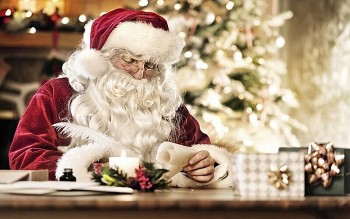 Where Does Santa Claus Live Today: Origin, Real Name, Biography Where Does Santa Claus Live Today: Origin, Real Name, Biography Who is Santa Claus, where does he come from, why is Santa Claus pictured as a big belly, wearing a red suit? |
 Top 4 Luckiest Zodiac Signs During Christmas 2024, According to Astrology Top 4 Luckiest Zodiac Signs During Christmas 2024, According to Astrology According to astrology, Santa will bring unexpected presents to the four most fortunate zodiac signs for Christmas. |
 Santa Claus 2024: Is That Belly Full of Cookies or Just Christmas Magic? Santa Claus 2024: Is That Belly Full of Cookies or Just Christmas Magic? Santa Claus is more than just a figure who delivers presents—he’s a symbol of kindness, generosity, and the magic of Christmas. |
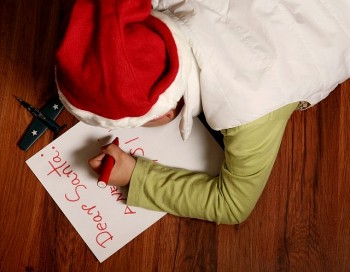 How To Write, Send Letters To Santa Claus: Best Samples, Address (USPS), Email, Calling How To Write, Send Letters To Santa Claus: Best Samples, Address (USPS), Email, Calling One of the most cherished traditions is writing a letter to Santa, expressing hopes, wishes, and requests for Christmas. In this comprehensive guide, we’ll walk ... |
Jenny Lee
Article URL: https://knowinsiders.com/the-secret-lives-of-santa-claus-around-the-world-41832.html
All rights reserved by KnowInsider
